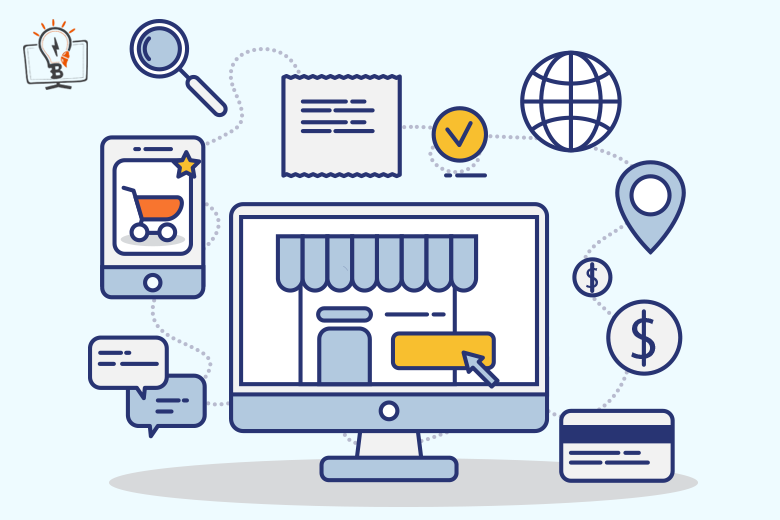The term marketplace is usually referred to a web-based module where a vendor can sign up and initiate offering their items. On one hand, visitors or buyers can obtain various competitive rates for a similar product. And on the other hand, the e-commerce firm operating the marketplace mostly secures commission charge from each sale.
Benefits of E-Commerce Marketplace
We are well acquainted with worldly renowned e-commerce marketplaces such as Amazon and Alibaba as well as the domestic platforms similar to ASOS, Walmart, etc. This might be the digital way to offer standard goods with more discounts, and, at times publish customized launch offers on a specific portal.
To illustrate, smartphone manufacturer giant OnePlus launches its new mobile phones on Amazon; this way, consumers can only purchase it online and not from physical stores.
We have seen online shopping portals are becoming the optimum platform for bargain deals, new product launches, heavy discount sales, seasonal product and buy-now-and-pay-later schemes.
Moreover, conveniences such as return policy, exchange policy, cash-on-delivery, etc. may work well in the long run to attract unconventional buys online.
At present, people are inured to order products like electronics, furniture, garments, medicines, footwear and books from websites. Often, these products are offered at heavy discounts and with other bundle offers.
Printing Marketplace
After this brief about a standard marketplace, let us try to imitate similar scenario for the printing marketplace, wherein some vendors are promoting it as a major tool to win large print orders.
Many of the trade printers wish to provide online printing services to their reseller and designer. While many software organizations want to offer online web to print based mechanism for printers to upload their print product and earn commission on every sale. Such companies will list all printers across the country and publish printing rates for the users to choose the lowest possible rates offered in their locale.
Finally, the web to print online editor vending company opts to integrate its web to print solutions with the marketplace. Their key objective is to push their editor and charge thousands more to present customers with magneto based open source marketplace for print.
The above described concept sounds good and sells, the print product often does not. In most scenarios, the printer gets carried away and spends millions for this type of open source print marketplace. Though, printer does not foresee how it can be applied to print, as it is not a standard product with standard specifications and fixed price.

Printing Marketplace Scenarios
Web to print product design software is proposed to the printer with an idea that their re-seller can run an online printing website and generate orders, which is then sent to the printer for printing. This could provide them the authority to key their own print product and fix print rates with suitable margins as agreed between the two parties.
In some cases, web to print store is sold to investors as an idea to function online printing marketplaces where they expect to get sign up from printers across the globe and offer their print rates. When buyers select an item and area of residence, they will get a list of registered printers. For instance, if someone in New York searches for t-shirt printing, list of printers providing a variety of templates and style at competitive rates will get populated.
In both cases, comparison along with standard e-commerce marketplaces cannot be made, as, printing products are not standard; each of them requires multiple flexible option such as paper quality, printing formats, cuts, front/back printing, quantity, etc.
Once an order is placed, there can be many hindrances, for example, the product is not shipped directly. It first needs to be designed and then printed. There may or may not be money-back guarantee or cash on delivery unlike standard electrical product returns, since a dissatisfactory print order has the risk of being a total waste if the requirements are not perfectly matched.

Effects on Margin Due to Competition in Printing Marketplace
Printers who provide online printing to their resellers initially spend millions to create a common marketplace solution, which cannot be used easily by their resellers. So, re-seller margin is further reduced as they start giving the discount from their margin to procure online printing orders.
This triggers that the trade printers indirectly give a rise to competition among their own resellers. The race that whoever picks the order finally comes to the trade printer to get it printed at their B2B fixed rates fuels the unwanted competition.
Conclusion
The idea of discussing this topic is to create awareness in the printing industry that standard marketplaces cannot be blindly duplicated for printing. This holds true when aiming to boost individuals to earn more instead of offering to print at discounted rates.
Moreover, printers should always opt for genuine printing storefront solutions rather than opting for printing marketplace. This web to print storefront solutions may seem pricey but they can provide better design and print management with good customer support as well as training guidance.




